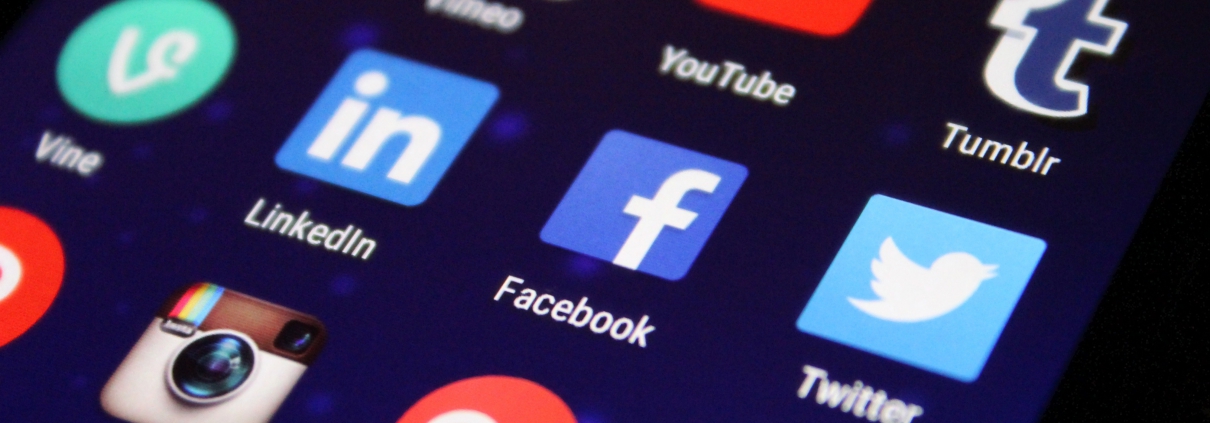LinkedIn – the professional networking social media site
Founded in 2002, LinkedIn quicky became the largest professional networking site available. It now has over 760 million registered members from more than 150 different countries. But, why do so many people choose to set up a LinkedIn account? Well, typical motivations are:
- Finding a job opportunity;
- Sharing a job opportunity;
- And connecting with other professionals (to ask advice, share ideas or collaborate).
For me, the best way to think about LinkedIn is that it’s a digital version of your CV (with plenty more opportunities to show potential employers who you are).
Creating your profile
With LinkedIn, this best place to start is creating a profile. LinkedIn currently allows you to add the following to your profile page: Your name and location, profile and cover images, a short biography, an about section, a ‘featured’ section, experience (paid and voluntary work), education and qualifications, skills and endorsements, and recommendations.
That’s quite a lot of information. Let’s break some of those areas down to see what they cover:
- You name and location – you should use your full name (first name and surname) and choose either the location where you are currently based or where you want to be based (e.g., if you are searching for jobs in London, select London. Why? When recruiters search, they often do so by location).
- The short biography/summary – It’s up to you to decide what you put here, but most people put their job title in the bio. If you’re unemployed or searching for a job, use relevant words that help with search functions – e.g., ‘English Literature graduate seeking jobs in publishing’. Here, you can also use #ONO (Open to New Opportunities). This gets picked up in recruiter searches.
- Images and the featured section – most LinkedIn profiles tend to feature very formal, professional (in the traditional sense) looking photos. But just because most people choose to go this way, it doesn’t mean you have to do so. Remember, it’s your profile. When I started using LinkedIn, I would add photos that I thought would interest the type of employer I was looking for (someone interested in the charity sector work and a positive approach to work – so, lots of smiling faces!). In the featured section you can add relevant links – perhaps an article you’ve written?
- The ‘about’ section – it’s typical to start CVs with a personal statement/about me section. The ‘about’ section on your LinkedIn profile is an extension of this. This is the place to have the key information you want a potential employer to see. Lots of LinkedIn users will also add information about their current role, skills, and perhaps about their life outside of work.
- Professional experience, voluntary work and education – These sections are where you can summarise your previous experience, whether that’s the grades you achieved at school, some volunteering you do on the weekends, or a list of your previous job roles as well as your current one. What should I put in the job roles sections? Similarly to your CV, a good simple structure would be to add in information on the following: key roles and responsibilities, and key achievements. You can also add in information about why you left a job, for example “to find a company with better opportunities for career progression”.
- Skills – In the skills section you can add in any skills that you’re proud of or that you feel are relevant to the experience you have and the jobs you are applying for. For example, if you’re applying for a job that requires IT skills, it would be good to add Microsoft Office (Word, PowerPoint and Excel) to your skills section. You can also ask your connections to ‘endorse’ each of your skills!
- Recommendations – last but not least, recommendations. You can leave ‘recommendations’ on your connections’ profiles, stating what your working relationship is/was with them (e.g., are you their manager or do you work in the same team?). You can also ask them to leave a recommendation on your profile! A typical recommendation would be ‘Ayeesha and I worked together on the Blue Project during our time at Jenkins and Co. Ayeesha was hard working and a pleasure to be around…’
So that’s the basics of the profile covered. What’s next?
Like all social media sites, LinkedIn relies a great deal on user generated content – the things that you and I post, share, and engage with. What this means is that there is no right or wrong way to use LinkedIn. Sure, there are some things you can do that are likely to help you build meaningful connections and there are some things that might put people off. But the point is that your LinkedIn profile is yours to develop as you see fit.
You might have been told that your LinkedIn profile and activity needs to be ‘professional’, but it is worth knowing that this is subjective. So, my advice would be this: create a profile and content that align with the version of yourself that you want to present to the world (hopefully the real you!) and that attract the type of people and companies that you want to connect with.
While it’s great to put your spin on your profile and activity, here are some standard dos and don’ts (these are based on my experience and on my opinions – take whatever’s useful and discard anything that isn’t):
Don’t…
- Let the fear of reaching out to someone stop you from doing so. It’s completely natural to feel scared or unsure when reaching out to someone you’ve never met before for advice or help. The best way to reach out is politely and clearly – make it obvious what you are asking for.
- Be offended or feel put down if someone doesn’t reply to you on LinkedIn. When I want to learn something new or get an opinion, I’ll typically message 5-10 individuals because I know that several of these will ignore the message.
- Lie or write anything that would be misleading on your profile. In the long-run it’s never worth lying about your experience on your CV or on LinkedIn.
- Neglect your LinkedIn profile. A bad LinkedIn profile is in some ways worse than not having a profile at all! Where possible, keep your information updated.
- View LinkedIn as a ‘taking’ platform. LinkedIn offers many ways to give. For example, you can offer your advice or help a friend by connecting them to someone you’ve met on LinkedIn.
- Be afraid to report anything that you think is wrong. Although some people think otherwise (often men, sadly), LinkedIn isn’t a dating site. If you see or experience something that you don’t think is right, report it to LinkedIn.
Do
- Use the power of ‘no’ if you want to. You will likely receive messages from people trying to sell their services, and there’s nothing wrong with this. There’s also nothing wrong with saying ‘no’ to them. Of course, be polite if you can, but don’t be afraid to say ‘no’ – by doing so, you save everyone time down the line!
- Be wary of what you write online. It’s good to stand up for things you’re passionate about, but remember that it’s hard to ‘unsay’ things you’ve said online.
- Utilise the potential of LinkedIn – never before has it been so easy to connect with great leaders, people in positions of power and influence, and potential mentors and role models.
- Borrow ideas from other users – if you see something you like, use it on your profile.
- Put some time into creating a profile that you’re proud of!
Contacting other people
Examples of how to get in touch with someone you don’t know:
- “Thank you very much for accepting my invitation to connect. I am interested in learning more about a career in X area and I can see from your profile that you have worked in this industry for some time. Would you mind telling me a bit more about how you got into this industry?”
- “Thank you for connecting. I invited you to connect because I am looking for a change of career and I am seeking work experience opportunities in the industry you work in. I was wondering if you could point me in the direction of any useful sites or organisations sharing these kinds of opportunities that you are aware of.”
Responding to messages
You’ll receive some great messages and offers on LinkedIn and you’ll receive some that aren’t so exciting. Seeing as lots of us are too nice for our own good, here are some ways to politely say ‘no’ on LinkedIn:
- “Thank you very much for your message. This sounds interesting, but it’s not something I want to pursue at this time.”
- “Thank you for your invitation to connect. This isn’t something I would like to do, but I’m, happy to stay connected.”
What should I post or share on LinkedIn?
Again, it’s up to you. You can post about things that matter to you (E.g., conservation work) or something that might help you get a job, like sharing a photo of a qualification you’ve acquired. If you can, it’s important to stay active on LinkedIn – interact with posts you find interesting, join in with debates (respectfully of course) and utilise the content available to help you learn and progress.
Good luck!
I hope you found some of the advice in this article useful. This is a very basic overview of LinkedIn and it doesn’t cover many of the tools available through the platform, so I would advise you do your own research. Not sure where to start? Just search for LinkedIn tutorials on YouTube – they might not all be useful, but it’s a good starting point!
If you would like any help with creating a LinkedIn profile or if you would like someone to review your profile, please email Hal@youpress.org.uk or you can contact Hal directly on LinkedIn – Hal Davidson





